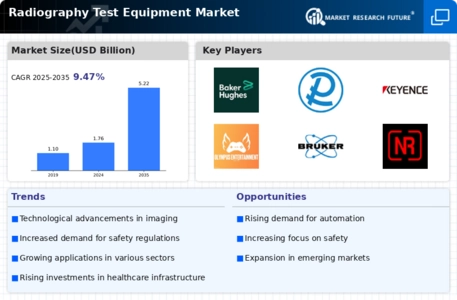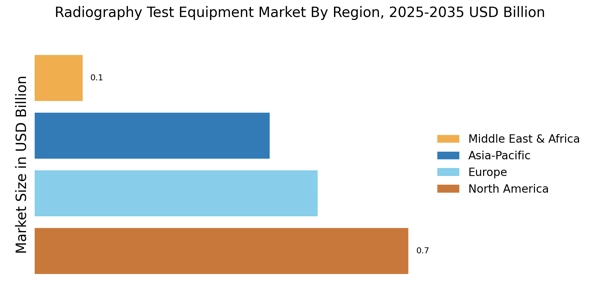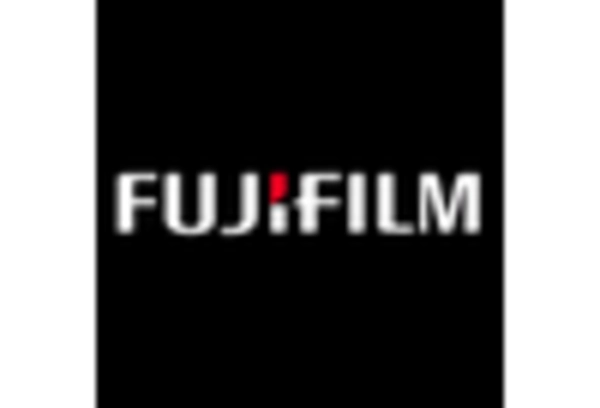Regulatory Compliance
The Radiography Test Equipment Market is significantly influenced by stringent regulatory requirements aimed at ensuring safety and efficacy in medical imaging. Regulatory bodies are continuously updating standards for radiography equipment, which compels manufacturers to innovate and enhance their products. Compliance with these regulations not only ensures patient safety but also fosters trust among healthcare professionals. The market is expected to see a rise in demand for equipment that meets these evolving standards, as healthcare facilities prioritize compliance in their procurement processes. This trend is likely to drive growth in the radiography test equipment sector, as companies invest in research and development to align with regulatory expectations.
Technological Advancements
The Radiography Test Equipment Market is experiencing a surge in technological advancements, particularly in digital radiography and computed radiography systems. These innovations enhance image quality and reduce exposure times, thereby improving diagnostic accuracy. The integration of artificial intelligence in radiography equipment is also gaining traction, as it aids in image analysis and interpretation. According to recent data, the market for digital radiography is projected to grow at a compound annual growth rate of approximately 6.5% over the next few years. This growth is indicative of the industry's shift towards more efficient and effective testing solutions, which are essential for meeting the increasing demands of healthcare providers and regulatory bodies.
Increased Healthcare Expenditure
Rising healthcare expenditure across various regions is a pivotal driver for the Radiography Test Equipment Market. As governments and private sectors allocate more funds towards healthcare infrastructure, the demand for advanced radiography equipment is expected to increase. This trend is particularly evident in emerging economies, where investments in healthcare facilities are on the rise. According to recent statistics, healthcare spending is projected to grow by 5% annually, which will likely lead to an increased procurement of radiography test equipment. This influx of capital into healthcare is anticipated to stimulate innovation and competition within the market, ultimately benefiting end-users.
Aging Population and Chronic Diseases
The aging population and the rising prevalence of chronic diseases are critical factors driving the Radiography Test Equipment Market. As the demographic landscape shifts, there is an increasing need for diagnostic imaging to manage age-related health issues and chronic conditions. This trend is particularly pronounced in developed regions, where healthcare systems are adapting to cater to the needs of an older population. The World Health Organization has indicated that the incidence of chronic diseases is expected to rise, which will likely lead to a higher demand for radiography test equipment. Consequently, manufacturers are focusing on developing innovative solutions that cater to this growing market segment.
Growing Demand for Non-Destructive Testing
The Radiography Test Equipment Market is witnessing a growing demand for non-destructive testing (NDT) applications across various sectors, including manufacturing, aerospace, and construction. NDT methods, particularly radiographic testing, are essential for ensuring the integrity and safety of materials and structures. As industries increasingly prioritize quality assurance and safety compliance, the need for reliable radiography test equipment is expected to rise. Market analysts suggest that the NDT sector could contribute significantly to the overall growth of the radiography equipment market, as companies seek to adopt advanced testing solutions to mitigate risks and enhance operational efficiency.


















Leave a Comment